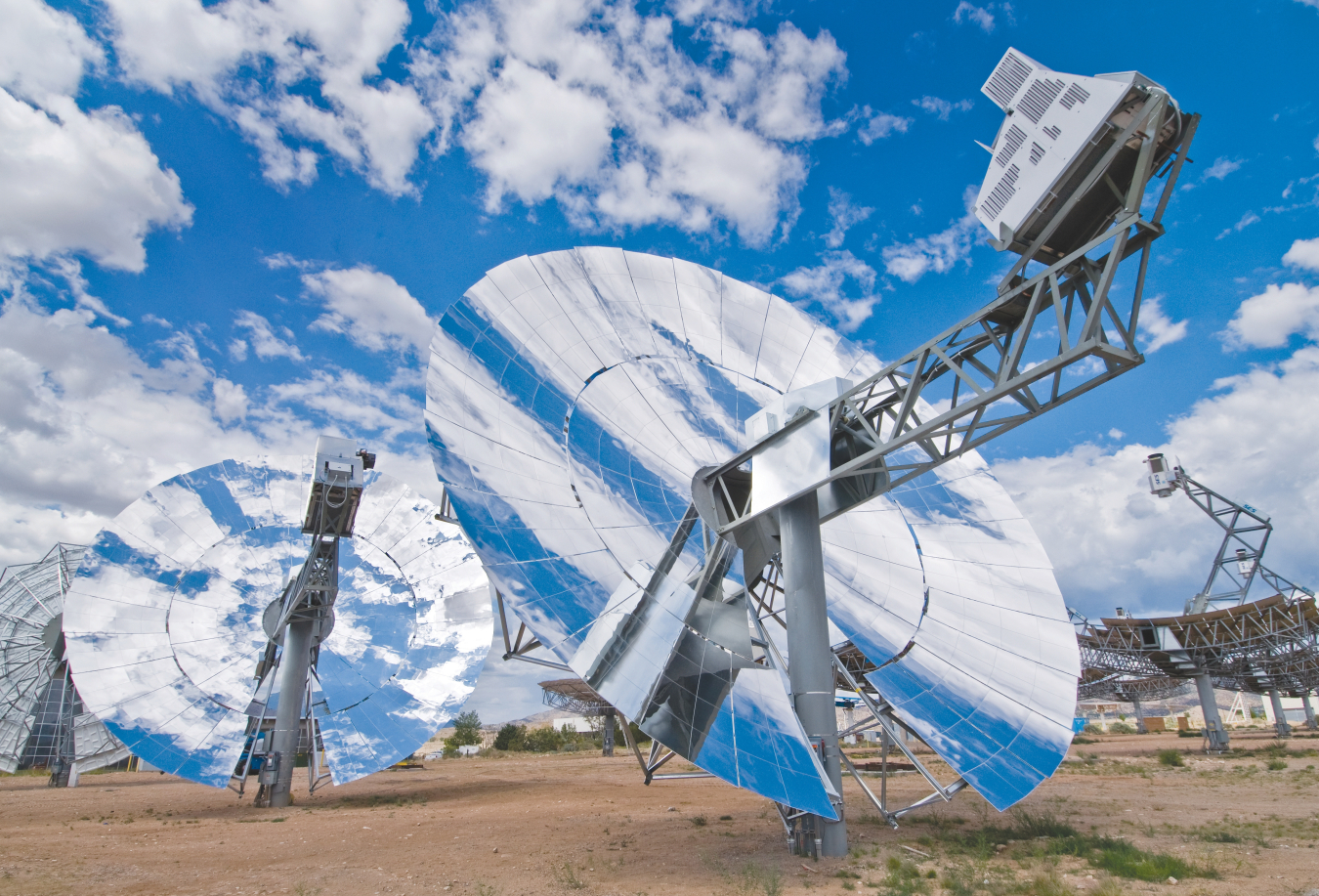
This photograph features the four newly designed solar power collection dishes at Sandia National Laboratories’ National Solar Thermal Test Facility (NSTTF) that Stirling Energy Systems (SES) and Tessera Solar unveiled in 2009. Called SunCatchers™, the new dishes have a refined design that will be used in commercial-scale deployments of the units beginning in 2010. Sandia’s concentrating solar-thermal power (CSP) team has been working closely with SES over the past 5 years to improve the system design and operation. The modular CSP SunCatcher uses precision mirrors attached to a parabolic dish to focus the sun’s rays onto a receiver, which transmits the heat to a Stirling engine. The engine is a sealed system filled with hydrogen. As the gas heats and cools, its pressure rises and falls. The change in pressure drives the piston inside the engine, producing mechanical power, which in turn drives a generator and makes electricity. The new SunCatcher is about 5,000 pounds lighter than the original, is round instead of rectangular to allow for more efficient use of steel, has improved optics, and consists of 60% fewer engine parts. The revised design also has fewer mirrors — 40 instead of 80. The reflective mirrors are formed into a parabolic shape using stamped sheet metal similar to the hood of a car. The mirrors are made by using automobile manufacturing techniques. The improvements will result in high-volume production, cost reductions, and easier maintenance.

